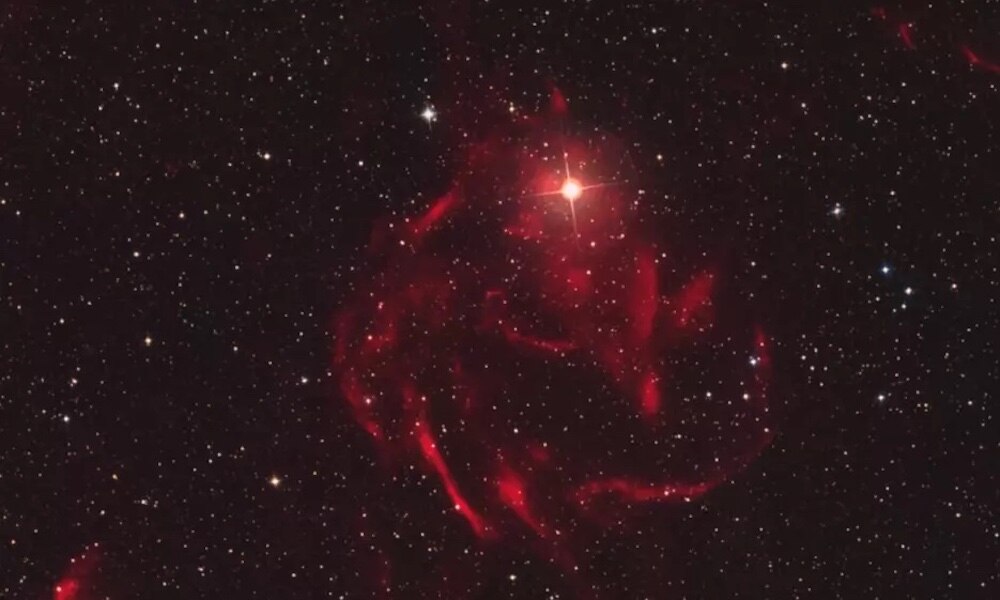Create a free profile to get unlimited access to exclusive videos, sweepstakes, and more!
It’s alive! When two dying stars are Frankensteined together, you get a new nebula
While there are many known common envelope systems, none have ever been caught in the phase that this one has.

Dr. Frankenstein hasn’t been so excited since he brought his creature to life in a crackling jolt of electricity. This is kind of like the cosmic version of using dead body parts to create a new monster.
When stars orbiting each other in a binary system start gasping their dying breaths, they morph into red giants — which is the ultimate doom of our Sun. At least the Sun will go it alone. The outer envelopes of gargantuan balls of fire in a death spiral eventually merge into what is known as a common envelope or CE system. What is bizarre about this type of death is that once all that gas merges, the zombified cores of the stars re-evolve as if nothing happened.
While there are many known common envelope systems, as well as star systems that started out with a revived star from a CE, none have ever been caught with a fully developed envelope discharging gases until now. This could explain how heavy elements are scattered into the void. An international team of researchers has now finally found one imaged by telescopes in Chile and several space missions, with further spectroscopic data from the MDM observatory.
“[System YY Hya] is a compact binary system containing a K-dwarf star that is strongly irradiated by a hot white dwarf companion,” the scientists said in a study recently published in Astronomy & Astrophysics.
What makes YY Hya different, besides no one ever having glimpsed a CE with a fully developed envelope, is that the companion star is so massive that it beats out any others seen in this type of nebula before. K-dwarf stars are actually not the blazing beasts you may imagine. They are red dwarf stars (aka “orange dwarves”) that are also thought to have some of the best chances at hosting extraterrestrial life, because they are long-lived and not so temperamental as some other stars. The companion of the K-dwarf in this system is a scorching white dwarf.
So what’s the deal with the white dwarf being the villain all of a sudden? It’s making the K-dwarf that much hotter because it keeps bombarding it with radiation inside the 500,000-year-old haze of gas and dust where they both exist. Since they are tidally locked, it only affects one side of the K-dwarf, but being torched by these fires also sets off extreme phenomena on that side. That nebulous haze is also the biggest ever found in a CE. The way other nebulas are positioned in relation to it may also mean that it has huge outflows of star stuff going either way.
As if this hasn’t gotten weird enough already, it is possible that a nova, a star that exploded at the end of its life, first observed and noted by Chinese and Korean astronomers in 1086, might have something to do with YY Hya. Whichever star exploded is now a hot core with a new lease on life. The positions of the stars that were written down in those texts eerily match those of the stars in this system. Either way, YY Hya is such an extraordinary find that it is now being looked at as the poster child for a new class of nebulae.
What is being spewed out by YY Hya is the kind of material black holes love to eat, but if enough of it accumulates, it can also be a spawning ground for stars and planets.


























